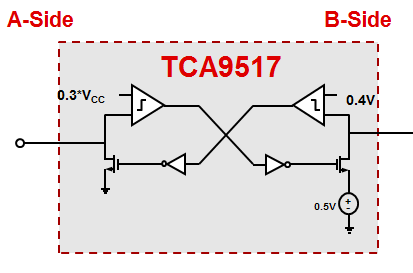Hi all
Would you mind if we ask TCA4311A, TCA9517 and TCA9517A?
<Question>
About the internal circuit of these devices, which do these devices have ’NMOS Series Switch type’ or ’Basic Structure of an NMOS/PMOS Parallel Switch type’?
Kind regards,
Hirotaka Matsumoto
-
Ask a related question
What is a related question?A related question is a question created from another question. When the related question is created, it will be automatically linked to the original question.


